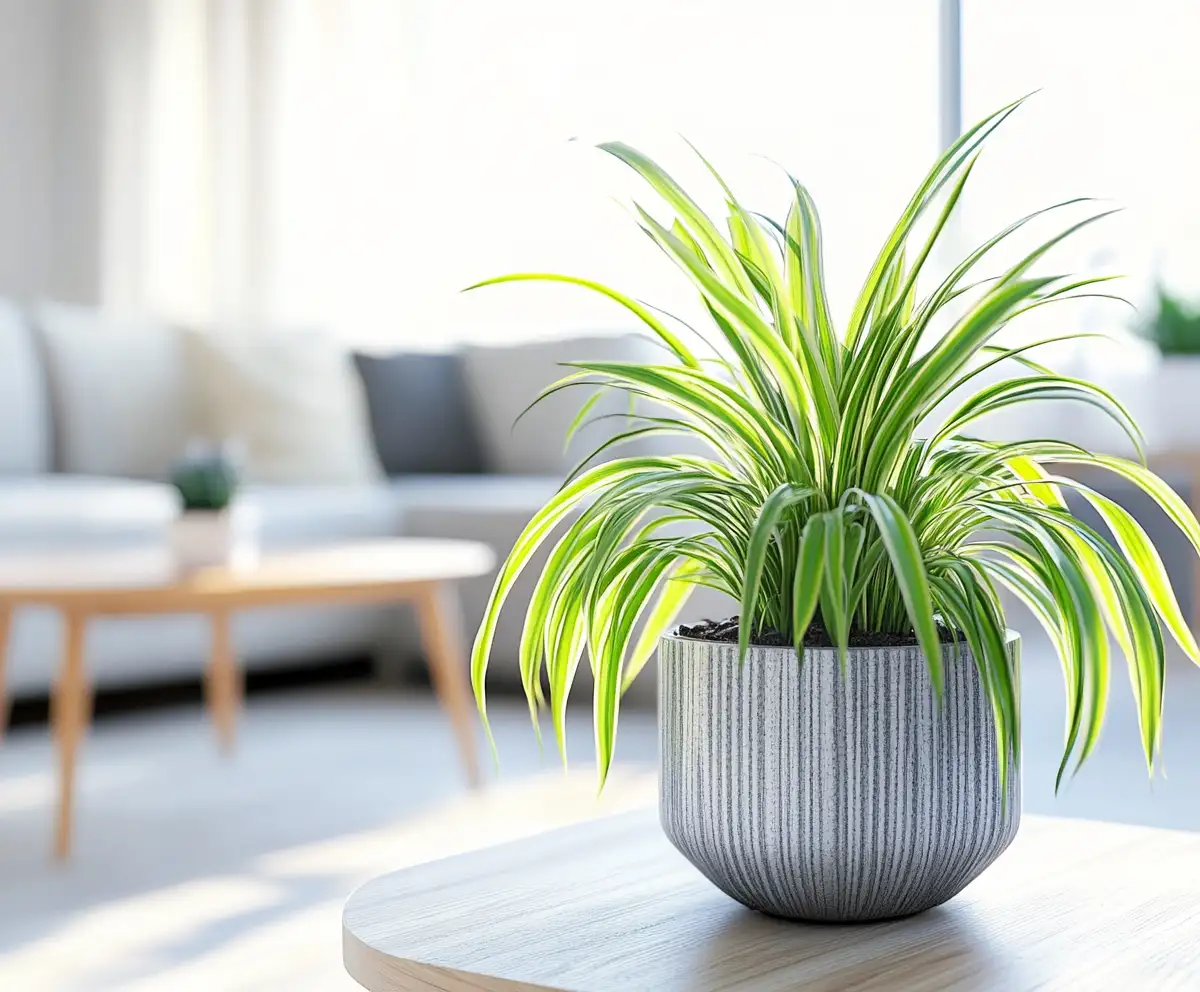Spider plant care is a joy for both new and seasoned plant lovers. With their arching green leaves and playful baby offshoots (spiderettes), these low-maintenance houseplants instantly liven up any room. Also known as “airplane plants,” they’re easy to grow and thrive with minimal effort—perfect for anyone looking to add greenery without the fuss. Let’s explore how to keep your spider plant happy and healthy indoors.
Table of Contents
Table of Contents
☀️ Light Requirements
When it comes to spider plant care, bright, indirect light is your best friend. These adaptable plants thrive near an east-facing window where they can bask in the gentle morning sun. While they can tolerate lower light conditions, this might slow their growth and delay the appearance of spiderettes.
🌱 Tips for Light Management:
- Place your spider plant near a sheer curtain to filter harsh rays.
- Avoid direct midday sunlight that can scorch the leaves.
- Rotate your plant occasionally to ensure even growth on all sides.
In lower light environments, your spider plant might become a bit leggy, but with the right balance of indirect light, you’ll enjoy lush, vibrant foliage.
🌡️ Temperature & Humidity
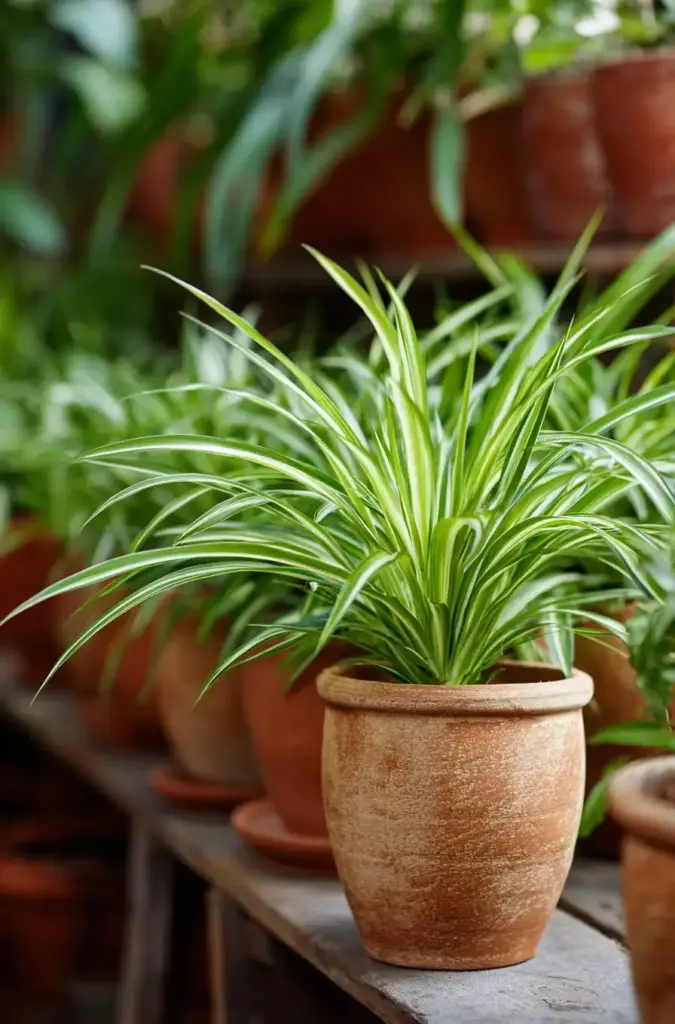
Maintaining the right temperature and humidity is key to excellent spider plant care. Spider plants prefer a consistent indoor climate that mirrors their native subtropical habitat.
🌡️ Ideal Temperature Range:
- 65°F to 75°F (18°C to 24°C) is perfect for growth.
- Minimum: 50°F (10°C). Protect from chilly drafts and sudden cold snaps.
💦 Humidity Preferences:
- Moderate humidity suits spider plants well.
- Grouping plants together naturally increases humidity.
- A small humidifier near your plant can help during dry winter months.
A good rule of thumb: if you’re comfortable in the room, your spider plant probably is too. Paying attention to these environmental details ensures your spider plant grows lush and happy.
💧 Watering
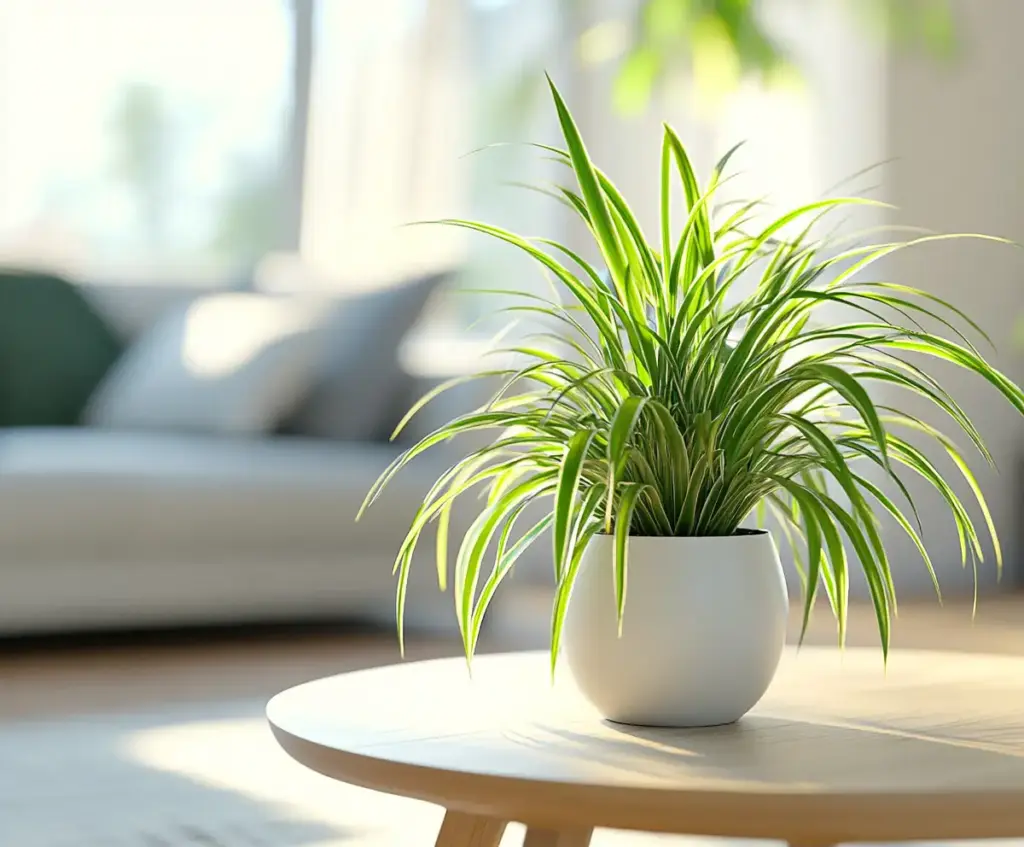
Proper spider plant care includes getting the watering routine just right. These resilient plants are forgiving, but they thrive best with consistent, balanced hydration.
🌿 How to Water:
- Allow the top inch of soil to dry out before watering again.
- Water thoroughly until excess drains from the bottom of the pot—this prevents waterlogging.
- Adjust your watering schedule based on the season; spider plants drink more in warm weather.
💡 Signs of Overwatering or Underwatering:
- Yellowing leaves or mushy roots = too much water.
- Drooping or crispy leaf tips = too little water.
Use your finger to check soil moisture before each watering. A simple poke test helps you avoid common watering mistakes, keeping your spider plant healthy and vibrant.
🪴 Soil & Drainage
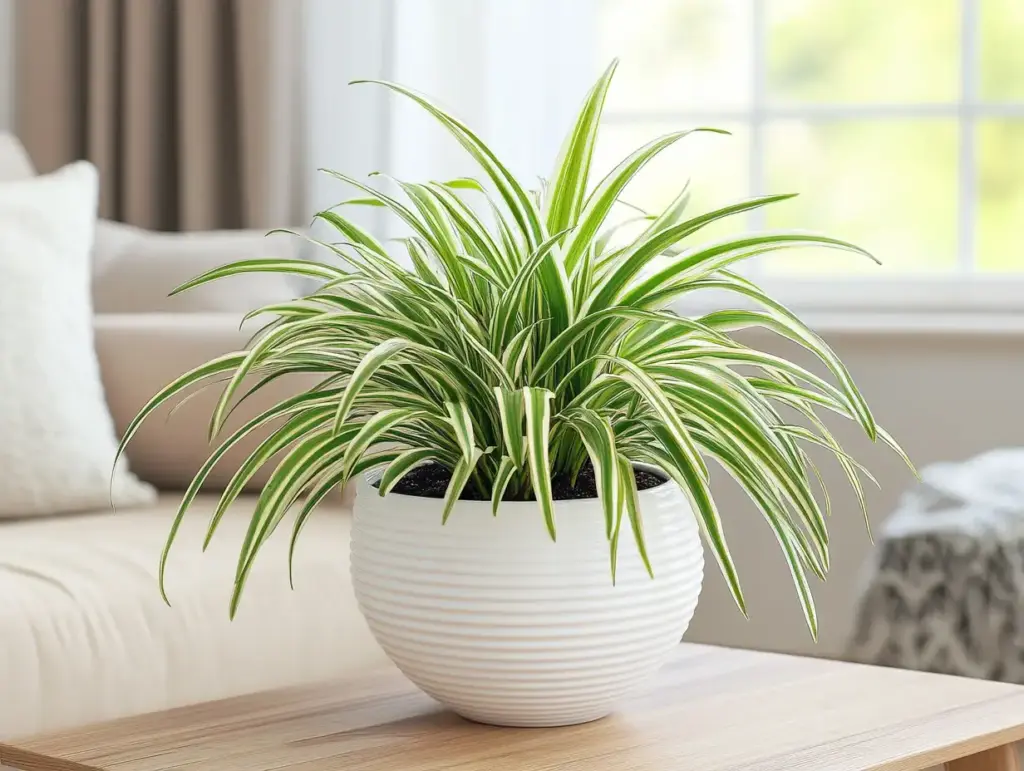
Healthy spider plant care starts from the ground up — literally! Choosing the right soil and ensuring proper drainage are crucial for preventing issues like root rot.
🌿 Soil Selection:
- Use a light, well-draining potting mix that contains perlite or coarse sand.
- A peat-based mix is a popular choice but adding a handful of perlite helps aerate the soil, preventing compaction.
🌱 Drainage Essentials:
- Always choose a pot with good drainage holes.
- Consider placing a small layer of gravel or pebbles at the bottom to help excess water escape.
- Avoid waterlogged soil by letting the pot drain completely after watering.
By providing your spider plant with the right soil environment, you’ll encourage strong root growth and lush foliage.
🌿 Fertilizing
A balanced feeding routine is a key component of spider plant care. These plants aren’t heavy feeders, but a little nutrition during the growing season helps them produce healthy, vibrant leaves.
💧 Fertilizer Tips:
- Use a balanced, water-soluble fertilizer (like 10-10-10) every 4–6 weeks during spring and summer.
- Apply at half the recommended strength to avoid fertilizer burn.
- Reduce or stop feeding during the fall and winter months when growth naturally slows.
🌱 Extra Tip:
- Flush the soil occasionally by watering thoroughly to prevent salt buildup from fertilizers.
Over-fertilizing can lead to brown leaf tips and stressed plants, so less is often more when it comes to feeding.
✂️ Pruning & Maintenance
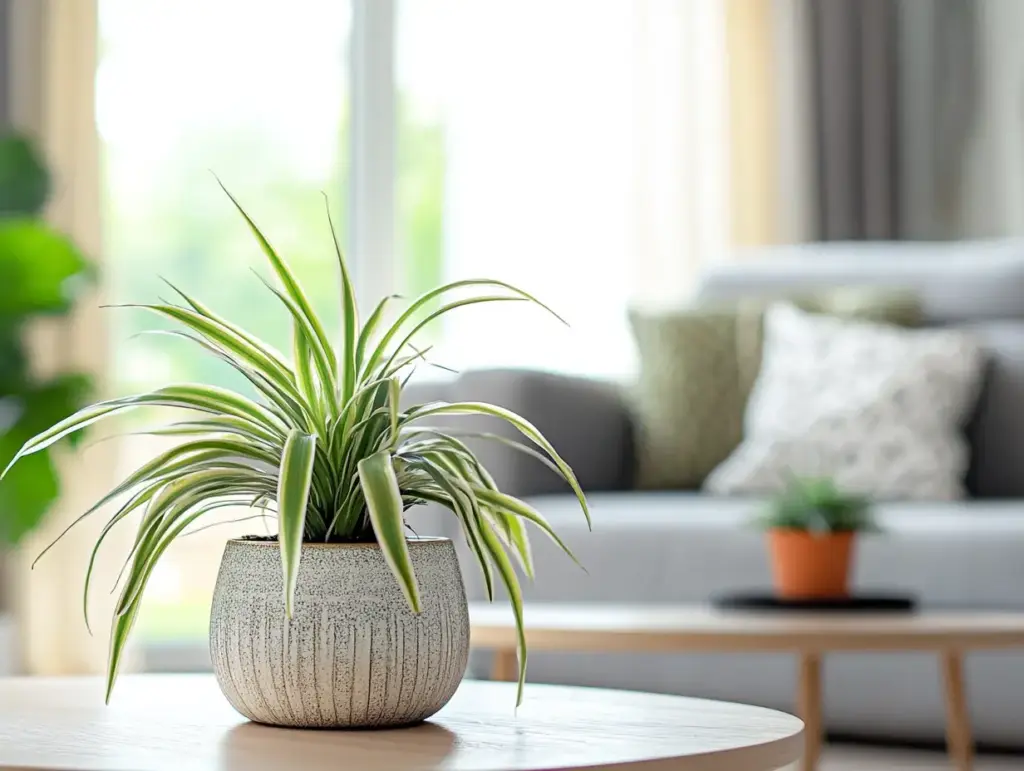
Pruning is an essential part of spider plant care, keeping your plant looking its best and encouraging healthy growth.
🌿 Trimming Brown Tips:
- Brown tips often result from low humidity, salt buildup, or hard water.
- Use clean, sharp scissors to trim just the browned portion—avoid cutting into healthy leaf tissue.
🍂 Yellow or Aging Leaves:
- Remove older, yellow leaves at the base to allow new growth to flourish.
🌱 Dividing Overcrowded Plants:
- If your spider plant becomes root-bound or crowded, gently divide it.
- Repot the sections into separate containers with fresh soil.
Regular maintenance not only keeps your plant looking tidy but also promotes better airflow and overall health.
🌱 Propagation
One of the most rewarding aspects of spider plant care is propagation — turning those charming spiderettes into new plants.
🌿 How to Propagate Spider Plants:
- Look for spiderettes (baby plants) that develop naturally on runners.
- Wait until they have small roots before detaching them from the parent plant.
- You can root them in a glass of water until the roots grow stronger, or plant them directly into moist potting mix.
🌱 Step-by-Step Propagation:
- Cut the spiderette off the runner using clean scissors.
- If rooting in water, place it in a glass with just enough water to cover the roots.
- Once roots are about an inch long, transplant it into soil.
- Keep the soil lightly moist until the plant is established.
With a little patience, you’ll soon have a thriving collection of spider plants ready to share with friends or display around your home.
🐞 Pests & Problems
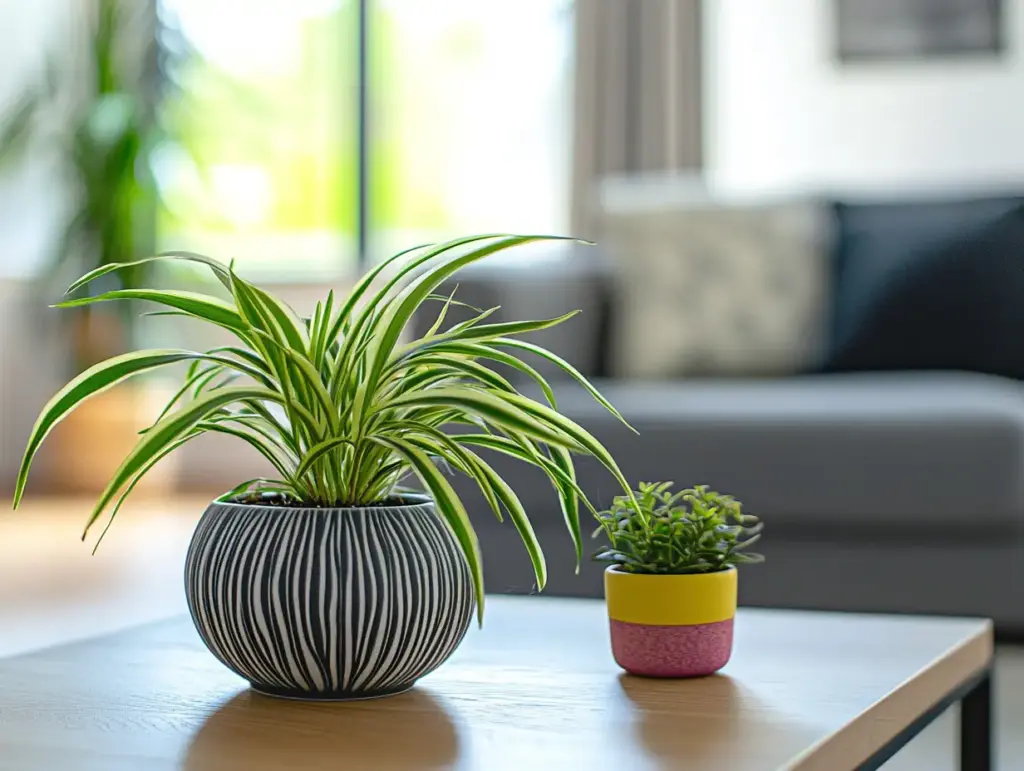
Like any houseplant, spider plant care comes with occasional challenges from pests and environmental stress.
🦟 Common Pests:
- Aphids and spider mites can sometimes find their way onto spider plants.
- Look for sticky residue, webbing, or tiny moving dots on the leaves.
🛠️ How to Handle Pests:
- Rinse leaves with lukewarm water to dislodge pests.
- Use insecticidal soap or a gentle soapy water solution to treat infestations.
- Isolate affected plants to prevent spreading.
💧 Root Rot & Overwatering:
- Yellow, limp leaves despite moist soil may signal root rot.
- Check roots for brown, mushy areas and trim them.
- Repot in fresh, well-draining soil to rescue the plant.
With prompt attention and gentle treatment, most pest and root issues can be managed successfully, ensuring your spider plant remains healthy and vibrant.
🏡 Indoor Styling
Spider plant care goes beyond just watering and feeding — it’s also about showcasing their beauty in your home.
🌿 Pairing with Other Plants:
- Group spider plants with other houseplants that enjoy similar conditions, like peace lilies or pothos, for a lush, jungle-like effect.
- Their arching leaves and dangling spiderettes add a dynamic touch to mixed plant displays.
🏠 Creative Displays:
- Use macramé hangers for a boho-chic vibe.
- Place them on bookshelves or plant stands to fill empty corners.
- Rotate them seasonally to avoid harsh sun or chilly drafts.
💡 Pro Tip:
Spider plants also look fabulous in hanging baskets, allowing the spiderettes to cascade down like a green waterfall.
Styling your spider plant creatively not only highlights its natural charm but also integrates it seamlessly into your living space.
🌞 Seasonal Care
Adjusting your spider plant care routine with the changing seasons helps your plant thrive year-round.
🌿 Summer Care:
- Water more frequently as plants tend to dry out faster in the heat.
- Shield them from harsh midday sun to prevent leaf scorch.
❄️ Winter Care:
- Water less often; allow the soil to dry out a bit more between waterings.
- Keep spider plants away from cold drafts and uninsulated windows.
- Use a humidifier or group plants together to combat dry indoor air.
Small seasonal adjustments ensure your spider plant remains healthy and happy, no matter what the weather’s doing outside.
🧳 Travel Tips
Even frequent travelers can enjoy spider plant care with a few smart strategies to keep their plants healthy while they’re away.
🌿 Before You Go:
- Water your spider plant thoroughly the day before you leave.
- Ensure it’s not sitting in standing water, which could cause root rot.
💧 For Longer Trips:
- Set up a self-watering system using a wick or water globe to keep the soil lightly moist.
- Ask a neighbor or friend to check the soil moisture weekly and water if needed.
Spider plants are forgiving, so they’ll likely bounce back even if you’re away for a short time. With minimal planning, your green buddy will be thriving when you return.
🌸 Conclusion
Spider plant care is simple and highly rewarding. With the right balance of light, water, and occasional feeding, these hardy plants thrive—producing lush foliage and charming baby offshoots. Perfect for beginners and loved by seasoned gardeners, spider plants bring easy greenery and charm to any space. Add one to your collection and enjoy a low-maintenance plant that grows with you.
❓ FAQs
Why are my spider plant’s leaf tips turning brown?
This is often caused by low humidity, salt buildup from fertilizer, or hard tap water. Trim off the brown tips with clean scissors, and consider using filtered water or adjusting your feeding routine.
Do spider plants really purify the air?
While there’s debate about how much they purify, spider plants can help reduce some indoor toxins and certainly bring a fresh, vibrant feel to any room.
Why isn’t my spider plant producing babies?
Spiderettes usually form when the plant is mature and getting enough light. Move your plant closer to a bright, indirect light source to encourage growth.
How often should I repot my spider plant?
Every 1–2 years is typical, or when the roots start circling the pot’s bottom. A slightly larger pot gives your plant more space to grow.
🌿 Love gardening inspiration? Follow me on Pinterest for bold plant ideas, tips, and seasonal color!

